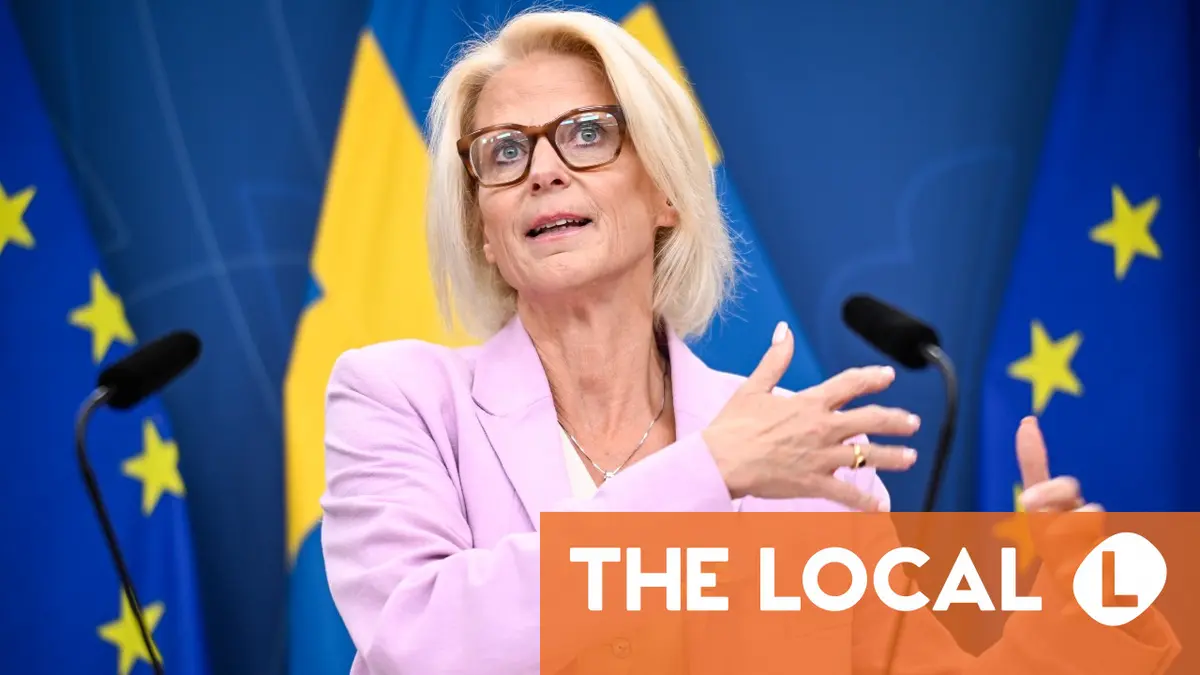It’s now less than a month to go until Sweden’s finance minister unveils the budget for 2026, and all the signs suggest that this will be an election budget. What tax giveaways can we expect?
Sweden’s finance minister, Elisabeth Svantesson, has been keeping her cards close to her chest as far as the budget goes since she got back from the summer holidays. But one thing she’s clear on is that she’s not going to hold back.
“We’re not going to propose a restrictive budget, that would be one of the worst things one could do in the current situation,” she said at a press conference. “We need to stimulate the economy and put some wind into households’ sails.”
Given Sweden’s lacklustre economic growth, high unemployment rate, and weak household spending, there’s a respectable economic argument for opening the floodgates (even if inflation, at 3 percent in August, is a little higher than Svantesson might like).
But there is also an election coming next year, so even if there wasn’t an argument in favour of increased spending, the government would want to prime the economy so that voters are feeling prosperous when they arrive at the polling booths.
“We have to see this budget as an election budget,” Alexandra Stråberg, chief economist for the Länsförsäkringar insurance companies, told The Local. “And I think that is not just about rewarding the voters you already have but about winning over new ones. I think they’re going to make life easier for households and companies.”
Advertisement
So how much does Svantesson have to spend?
The National Institute of Economic Research, which is tasked with advising governments on what they can spend to avoid running a net deficit over the economic cycle, has estimated the amount of extra spending or tax cuts Svantesson can afford to announce at just 34 billion kronor (around 3 billion euros).
But Svantesson has already signalled that she plans to spend a lot more than that.
“That’s the National Institute of Economic Research’s judgement of what we are going to have, and then we are going to make our own judgement,” she said.
Stråberg is estimating the amount of extra spending at 60 billion kronor, about the same as in the 2025 budget. The Confederation of Swedish Industry estimates that Svantesson has some 65 billion kronor of spending room.
In its August monthly outlook, SEB bank predicted that Svantesson will be bolder, unveiling extra spending or tax cuts worth as much as 80 billion kronor.
The finance ministry will announce its own estimates of what it has to spend on August 28th.
Advertisement
What tax giveaways are most likely?
Both Stråberg and Jens Magnusson, chief economist at SEB, predicted that Svantesson would not cut taxes directly, say by cutting the state income tax below 20 percent or raising the income at which people have to start paying it from today’s 625,800 kronor.
Instead, they expected Svantesson to either increase tax rebates or benefits. Here are some possible areas where we’ll see increased spending.
Jobbskatteavdrag
Magnusson believes that this, the tax credit on earned income, is where Svantesson is most likely to focus, as it cuts taxes for working people while leaving tax on benefits recipients unchanged.
“Maybe they will tweak it somewhat to direct it more to low- and middle-income households, but it probably will be another general jobbskatteavdrag,” he told The Local.
Advertisement
Tax rebate on pension payments
There is one type of benefit recipient the government will want to help, however: pensioners.
“In order to also do something for retirees, my guess is that they will increase the grundavdrag, which is a basic deduction on taxable pension income before tax,” Magnusson said.
Increased child benefit
Stråberg said Svantesson could opt to channel money directly to households by increasing child benefit.
“It could be higher child benefits instead of tax cuts, but if it is tax cuts, I think they’ll be directed at groups with relatively low incomes,” she said. “The idea in this case is to get the economy going and above all to get consumption going, so I guess they’ll direct money to those groups who are going to consume if they get something extra in their accounts.”
ROT and RUT
ROT-avdrag and RUT-avdrag, which give tax rebates to those who employ people to get building work or cleaning done, could also be targeted, with Magnusson expecting the temporary increase in ROT avdrag to 50 percent announced in the spring budget to be extended into 2026.
Advertisement
Tax cuts for business?
The Confederation of Swedish Industry has called on Svantesson to cut corporate tax from the current 20 percent right down to 15 percent, something its chief economist, Sven-Olof Daunfeldt, argues would kick-start the economy.
Magnusson, however, suspects that this will not be nearly as high a priority for Svantesson as funnelling money directly back to voters.
Rather than cut corporate tax, he believes Svantesson is more likely to cut Sweden’s payroll tax or arbetsgivaravgifter, as that would have a more direct impact on unemployment.
“I don’t think it’s very high on the agenda but it is quite possible,” he said.
